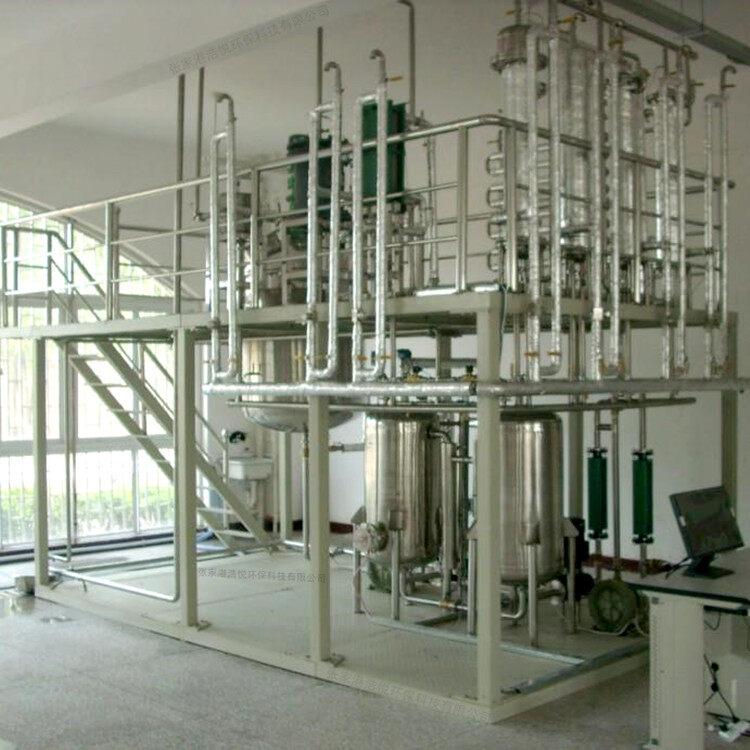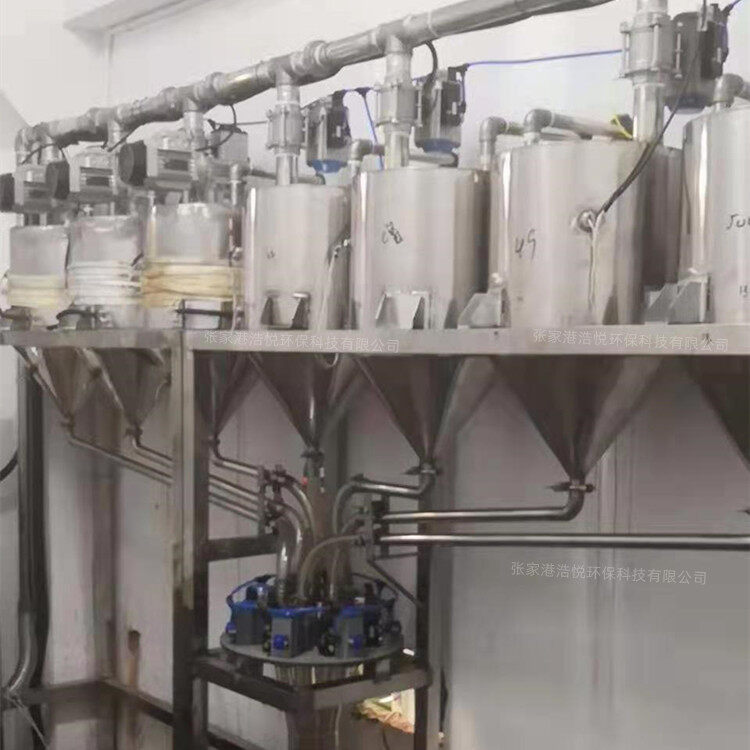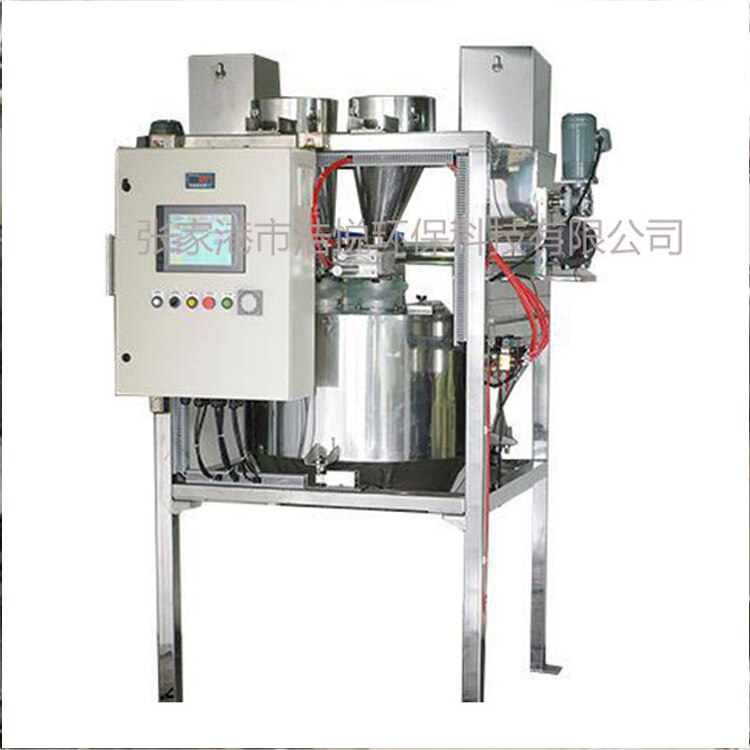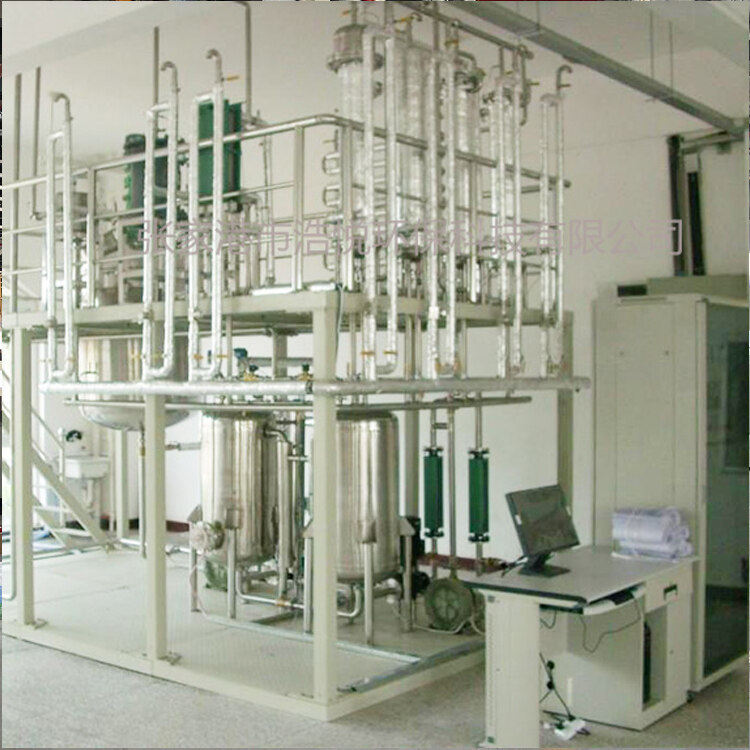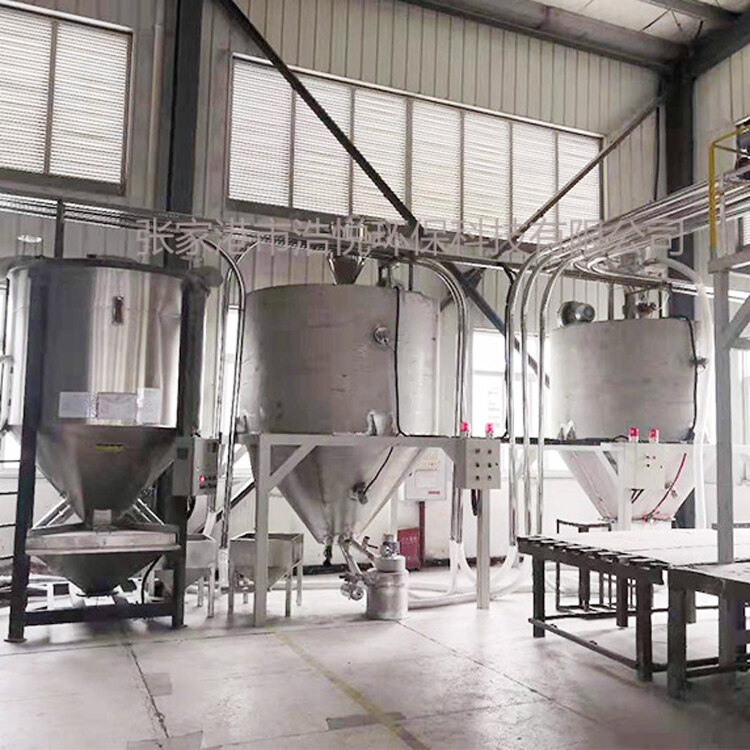- Introduction to automatic batching machine and fully automatic batching machine equipment
- The powder metering system tells you about the introduction of the mixing and drying machine
- 1000kg vacuum feeding machine
- Fully automatic small material batching system
- Research on Innovation of Automatic Weighing Machine Technology
- Design and operation of automatic batching system using PLC, industrial computer and frequency converter
Automatic metering and conveying of liquids
- Category:Automatic metering and conveying equipment
- Hits:141次
- Release Date:2025-06-27
- Share:
- Inquiry
- Details
In modern industrial production such as chemical, food, and pharmaceutical industries, precise measurement and efficient transportation of liquid materials are the core links to ensure product quality stability and improve production efficiency. The automatic liquid metering and transportation technology integrates high-precision sensors, automation control technology, and intelligent algorithms to achieve the full process automation management of liquid from metering to transportation, effectively solving the problems of large errors, low efficiency, and high labor intensity in traditional manual operations, and becoming an important force in promoting the transformation of industrial production towards intelligence and refinement.
1、 Technical principles
The automatic measurement and transportation of liquids are mainly based on two principles: flow measurement and weight measurement. Physical quantities are converted into electrical signals through sensors, and then processed by the control system to achieve precise measurement and transportation control.
In the flow measurement method, the electromagnetic flowmeter is based on Faraday's law of electromagnetic induction. When a conductive liquid cuts magnetic field lines in a magnetic field, an induced electromotive force is generated at both ends of the liquid. The liquid flow rate is calculated by detecting the magnitude of the electromotive force; The turbine flowmeter uses fluid to drive the turbine to rotate, and the turbine speed is proportional to the flow rate. The speed is detected by sensors and converted into flow rate. The weight measurement method mainly relies on weighing sensors. When the liquid flows into the measuring container, the sensor converts the weight change into an electrical signal, which is amplified, A/D converted, and transmitted to the control system. It is compared with the preset weight value to control the opening and closing of the feeding valve and achieve quantitative measurement.
The control system monitors and regulates the metering process in real-time based on preset formula parameters. When a liquid reaches the set measurement value, the system automatically closes the corresponding feed valve, starts the next liquid measurement, until all material ratios are completed, and then controls the conveying equipment to transport the prepared liquid to the designated position.
2、 Core components of the system
(1) Measurement unit
Flow metering devices: Common ones include electromagnetic flow meters, turbine flow meters, mass flow meters, etc. Electromagnetic flowmeter has high accuracy and good stability, suitable for measuring conductive liquids, with an accuracy of up to ± 0.5%; Turbine flow meters have a simple structure and low cost, and are commonly used in industries such as petroleum and chemical; Mass flow meters can directly measure liquid mass flow without being affected by temperature or pressure, with an accuracy of up to ± 0.1%. They are commonly used in scenarios that require extremely high measurement accuracy, such as liquid batching in the pharmaceutical and new energy industries.
Weight based measuring device: composed of weighing sensors, measuring containers, and brackets. The accuracy of the weighing sensor can reach 0.05% FS, and it can achieve static or dynamic weighing. Static weighing is suitable for batch batching, where liquids are measured in a static state; Dynamic weighing is used for real-time measurement in continuous production, by continuously monitoring the weight changes of the liquid in the measuring container and controlling the feeding speed.
(2) Conveyor unit
Power equipment: mainly various types of pumps, such as centrifugal pumps, gear pumps, screw pumps, etc. Centrifugal pumps are suitable for transporting high flow, low head clean water or low viscosity liquids; Gear pumps are commonly used for high viscosity liquids such as lubricating oil, ink, etc; Screw pumps are suitable for transporting liquids with high viscosity and solid particles, such as food slurries, and provide power for liquid transportation through the operation of the pump.
Transportation pipelines and valves: Different materials are selected for pipelines based on the characteristics of the liquid, such as stainless steel pipelines, which are corrosion-resistant and have good hygiene performance. They are commonly used in the food and pharmaceutical industries; PVC pipes have low cost and strong corrosion resistance, and are suitable for civil water supply and drainage as well as the transportation of some chemical liquids. Valves include electric valves, pneumatic valves, and regulating valves. Electric valves and pneumatic valves are used to control the on/off of liquids, while regulating valves accurately adjust the liquid flow rate according to control system instructions.
(3) Control system
Using programmable logic controller (PLC) or distributed control system (DCS) as the core, combined with human-machine interface (HMI). PLC is responsible for collecting sensor data, executing control algorithms, and driving actuator actions; DCS is suitable for large and complex systems, and can achieve centralized monitoring and management of multiple metering and conveying points. HMI provides an intuitive interface for operators, supporting operations such as formula setting, parameter adjustment, operation status monitoring, and fault alarm handling. The system also supports integration with the factory production management system (MES) to achieve data sharing and remote monitoring.
(4) Auxiliary unit
Including filters, buffer tanks, etc. Filters are used to filter impurities in liquids, preventing blockages in pipelines and damage to equipment; Buffer tanks can stabilize liquid pressure and flow rate, reduce the impact of fluctuations on measurement accuracy, and ensure stable system operation.
3、 Typical application scenarios
(1) Food and beverage industry
In beverage production, the liquid automatic metering and conveying system precisely controls the ratio and conveying of materials such as water, syrup, juice, additives, etc., ensuring consistent taste and quality of each batch of beverages. In the production of carbonated beverages, the system accurately measures raw materials such as water, carbon dioxide, syrup, etc., and after mixing, they are transported to the filling machine. In the production of dairy products, it is used for measuring and conveying materials such as milk, cream, and additives to ensure that the nutritional content of the products meets the standards.
(2) Chemical industry
In chemical production, this system is widely used in the production of coatings, inks, adhesives and other products. In the production process of coatings, resin, solvents, pigments, additives and other materials are accurately measured and transported to the reaction kettle for mixing and reaction, ensuring stable performance indicators such as coating color, viscosity, drying speed, etc. For the transportation of hazardous chemicals, the system has explosion-proof design and safety protection measures to ensure production safety.
(3) Pharmaceutical industry
The pharmaceutical process has extremely high requirements for liquid material measurement accuracy and hygiene. The liquid automatic metering and conveying system is used for drug preparation, accurately controlling the dosage of raw materials, solvents, and excipients to ensure accurate drug composition and stable quality. The equipment adopts materials and designs that comply with GMP standards, and the fully enclosed measuring and conveying process prevents material contamination, ensuring the safety of drug production.
(4) New energy industry
In the production of lithium batteries, liquid automatic metering and conveying systems are used for precise metering and conveying of electrolytes. The composition and amount of electrolyte directly affect the performance of the battery. The system ensures precise electrolyte ratio and improves the energy density and cycle life of the battery through high-precision measurement and stable delivery.
4、 Technological advantages and development trends
(1) Technical advantages
High precision measurement: Advanced sensors and algorithms keep measurement errors within a very small range, ensuring product quality stability and reducing the rate of non-conforming products.
Automation and Intelligence: Full process automation reduces manual intervention and labor intensity; Intelligent algorithms enable adaptive adjustment and fault warning, improving production efficiency and equipment reliability.
Data traceability: The system records real-time measurement and transportation data, supports production process traceability and quality analysis, and facilitates enterprise optimization of processes and improvement of management level.
Strong flexibility: supports multiple formula storage, can quickly switch according to production needs, adapts to different product production requirements, and meets diverse market demands.
(2) Development Trends
Intelligent upgrade: Introducing artificial intelligence and Internet of Things technology to achieve device self diagnosis, automatic calibration, and adaptive control, optimizing metering and conveying algorithms through machine learning, and improving system performance.
Integration and modularization: Develop integrated equipment that integrates metering, conveying, mixing, and filling, using modular design for easy installation, maintenance, and upgrading.
Energy conservation and environmental protection: optimize equipment structure and control strategies to reduce energy consumption; Adopting energy-saving pumps and valves to reduce energy consumption; Strengthen material recycling and utilization to achieve green production.
Safety and reliability improvement: Strengthen equipment safety protection design, improve explosion-proof and leak proof performance for hazardous chemical transportation; Improve fault warning and emergency response mechanisms to ensure safe and reliable production.
The automatic metering and conveying technology for liquids has become a key technology in modern industrial production due to its excellent performance and wide applicability. With the continuous advancement of technology, this technology will continue to innovate and break through, providing stronger support for the high-quality development of various industries.


